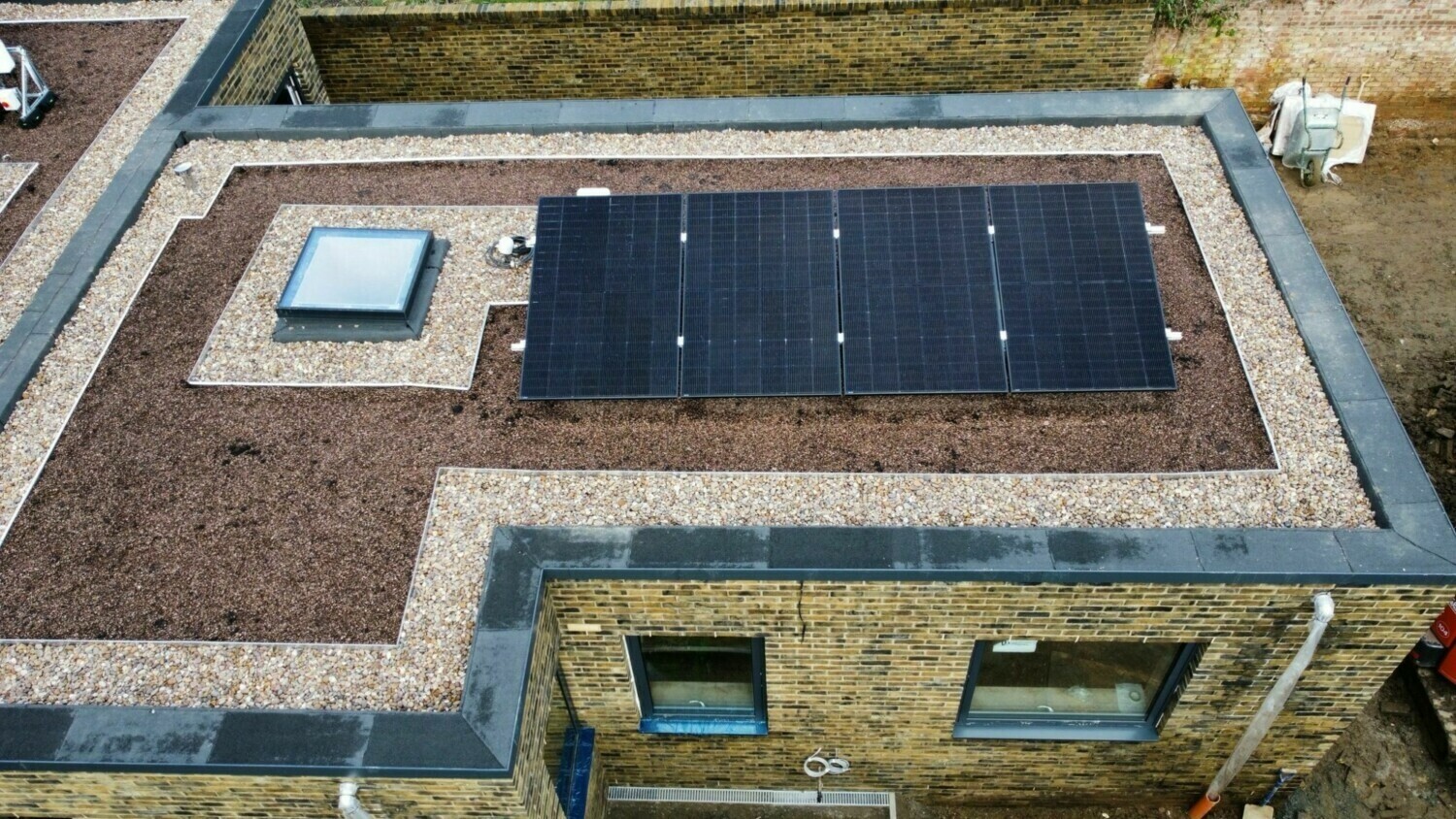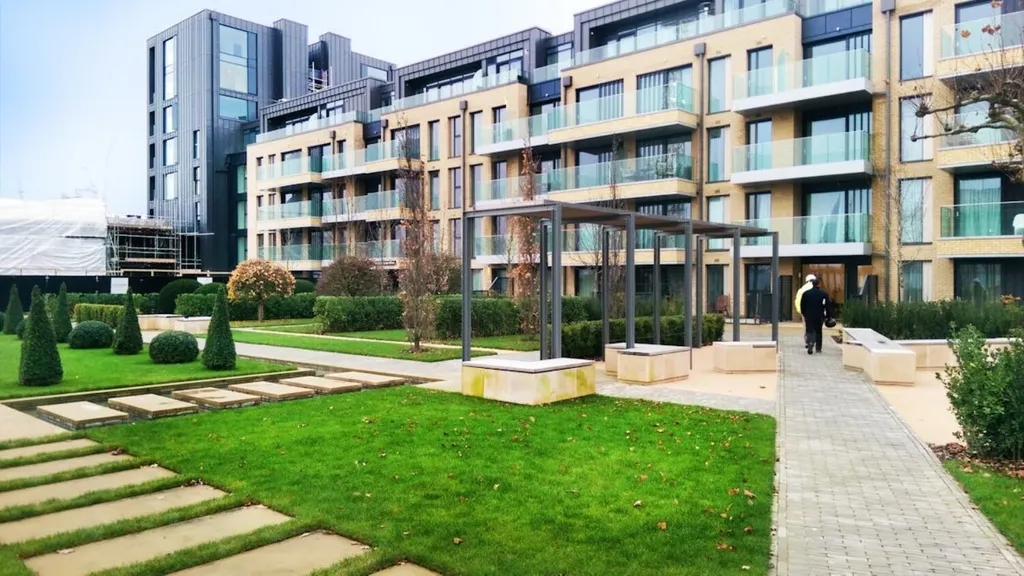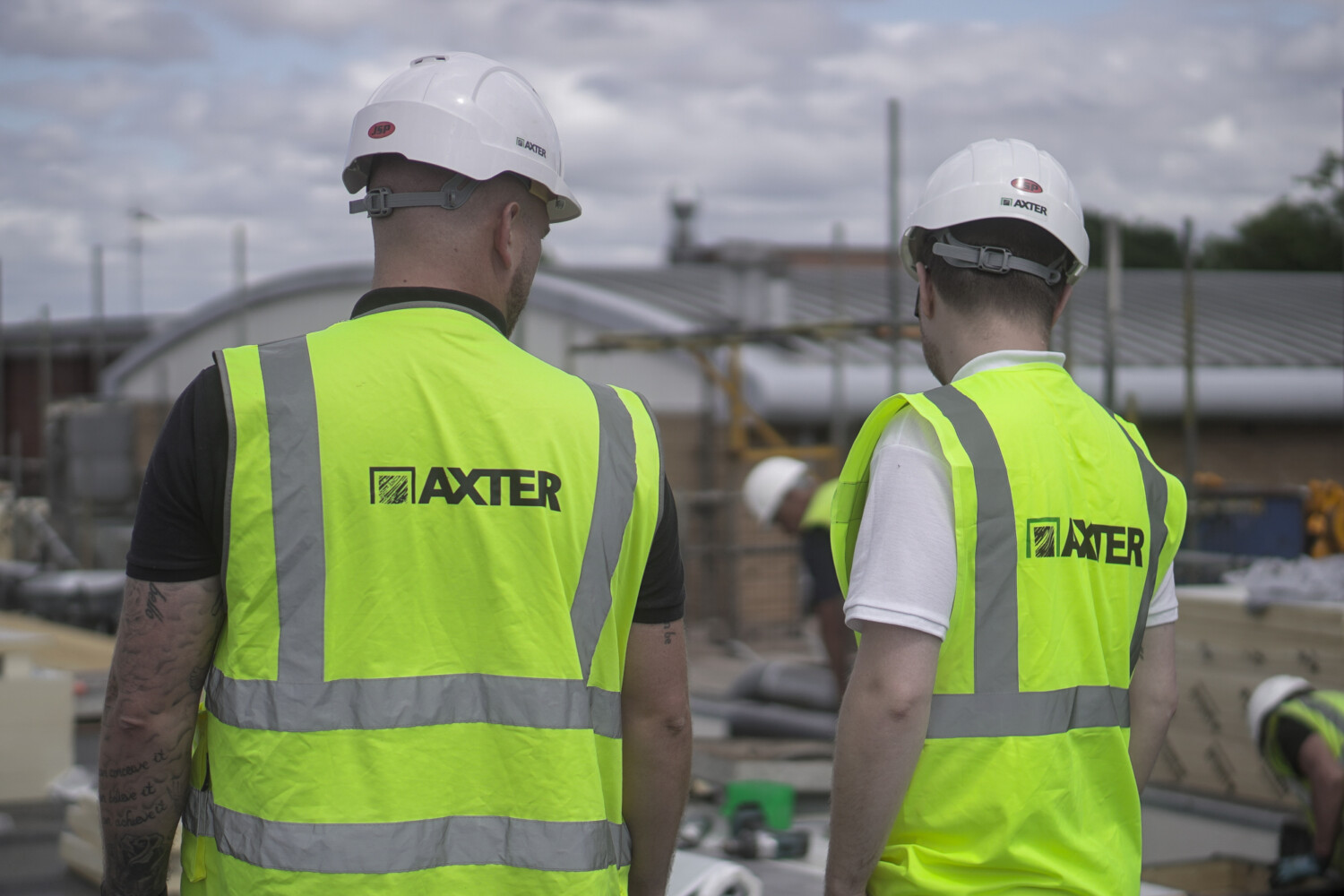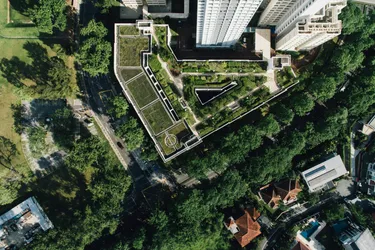
The flat roofing industry is leading the way in tackling some of the most pressing challenges and opportunities of our time.
From strengthening infrastructure and withstanding the impacts of climate change, to harnessing the potential of renewable energy and helping to tackle biodiversity loss, the sector is driving positive change and paving the way for a more sustainable future.
In this article, we explore the forces shaping the present and future of the roofing industry – including regulation changes, advances in technology, and climate awareness – and how at Axter, we’re pushing the boundaries of what roofs can do.
Net Zero and climate resilience: Flat roofing of the future
Advancements in technologies and systems – including solar PV, blue roofs, and green, living roofs – are transforming the role of roofs.
These technologies are shifting roofs from mere functional structures to vital tools for repairing biodiversity loss, assisting in the transition to renewable energy, and strengthening climate resilience.
“We believe in the untapped potential of flat roof spaces. We can create spaces for biodiversity and for people whether its combining solar power and green roofs to create biosolar rooftops or creating roof terraces where intensive green roofs are utilised and therefore make space for people to socialise and enhance communities.”
Luke Rootham, Solar PV and Green Roof Product Manager at Axter
Solar Pv:
In both new builds and retrofits, solar PV systems are becoming a critical feature for energy production. In new builds, these installations are often driven by regulatory requirements, but in the retrofit market, the increasing financial benefits have made solar an increasingly attractive option. With rising energy costs, the payback period for solar installations has shortened significantly – from 8–12 years to just 4–6 years – making them a viable option for many more property owners.


Green Roofs:
Green, living roofs are transforming how we view urban spaces. By creating habitats for wildlife and supporting biodiversity, green roofs help improve air quality, manage rainwater, and reduce the urban heat island effect. They also extend the life of the roofing membrane.
Blue Roofs:
Blue roofs – a SuDS (Sustainable Drainage Systems) attenuation system designed to manage the discharge of rainwater from roofs or podiums at a controlled rate – are mitigating the effects of flash flooding and contributing to effective stormwater management strategies in our towns and cities. These systems are one of the fastest-growing solutions to meet stormwater drainage obligations in roofing projects.
“We’re already seeing how key construction projects in the UK are benefiting from the use of blue roofs as part of their SuDS strategy, controlling stormwater 'at source', particularly on tight, urban sites, and providing a solution at the top of the SuDS hierarchy for planning requirements.”
– Andrew Keer, Product Manager – Blue Roof Systems at Axter

With over 30 years’ experience in the construction industry, Andrew brings a depth of technical expertise, as well as a passion for sustainability. Learn more about his expertise here.
Regulations driving adoption of green, blue, and solar roofing systems
The value of green, blue and solar PV roofing systems is becoming increasingly recognised by government, with existing and new regulations driving the adoption of these technologies in both new builds and refurbishments.
Biodiversity Net Gain (BNG):
In 2024, mandatory BNG was introduced as a planning requirement. This is a new process that requires the habitats lost on a development site to be accounted for and losses addressed. The need for new building projects to deliver biodiversity improvements is a key driver for incorporating green roofs, which offer benefits like improved air quality, wildlife habitats, and natural cooling.
Sustainable Drainage Systems (SuDS):
SuDS are designed to reduce the impact of rainfall on new & retrofit developments by using features such as green roofs, blue roofs, soakaways, grassed areas, permeable surfaces, and wetlands. However, they also can play a big part in providing additional areas for amenity and biodiversity if designed correctly, as well as reducing the overall amount of water that ends up in the sewers and storm overflow discharges. Blue roof solutions are in line with current SuDS best practice and anticipated updates to legislation and planning requirements.
“There’s immense untapped potential in unused spaces like rooftops, which motivates me to explore new ideas and technologies. Our fields are dynamic, offering endless possibilities for creative problem-solving without the constraints of traditional methods. This freedom to innovate and pioneer new solutions is exciting.”
– Luke Rootham, Solar PV and Green Roof Product Manager at Axter
Luke offers a deeper dive into the technical innovations, benefits, and challenges of solar PV, green roofs, and biosolar here.


Roof refurbishment and retrofit
Roof refurbishment and retrofit are becoming critical components in the drive towards a more sustainable future. With the majority of buildings that will exist in 2050 already standing today, upgrading and retrofitting these structures is essential for meeting the UK’s net-zero emissions target.
Uninsulated homes are losing around 25% of heat through their roofs. By improving the insulation and installing modern technologies like solar panels and green roofs, these structures can be made more energy-efficient, reducing their environmental footprint.
"We’re seeing a growing demand for roof refurbishment driven by the need to make better use of our existing buildings. 80% of the buildings that will exist in 2050 already exist now, so the need to maintain, improve, and upgrade these buildings to meet modern standards is essential if the UK is to meet its goal of net zero emissions by 2050.”
Sam Heard, Divisional Manager for Distribution and Refurbishment at Axter


Empowering the industry through education and training
Education plays a crucial role in navigating the ongoing transformation of the roofing industry. As new technologies and regulatory requirements emerge, it is essential for professionals to stay informed and equipped with the skills needed to implement these innovations effectively.
Axter offers a wide range of popular and technically informative CPD courses designed to provide professionals with the knowledge they need to succeed in this evolving landscape. Our CPD seminars are free to attend and cover a wide variety of flat roofing topics, authored by industry experts to inform, inspire, and engage.
Learn more about the CPD and training Axter offers here
Driving the industry forward
Axter is committed to driving the industry forward by actively engaging in key working groups and committees that shape sustainable technologies and standards.
This includes involvement in industry organisations such as Solar Energy UK’s Standards and Certification Committee, the Green Roof Organisation (GRO), and the Microgeneration Certification Scheme’s (MCS) Solar Mounting Working Group, and CIRIA’s (Construction Industry Research and Information Association) Susdrain, SuDS working group – of which Axter is an official Susdrain supporter.
Our team collaborates with industry peers and contributes to tackling critical challenges, such as fire safety in solar installations, the integration of green roofs with solar PV systems, and driving innovation in water management and sustainable design.
“It’s crucial for us as a team to stay informed about industry developments while also actively shaping them. The collaborative spirit of working together helps us create more effective solutions and guide the industry in the right direction.”
Luke Rootham, Solar PV and Green Roof Product Manager at Axter
Quality and service: The foundations of success
While innovation and sustainability are driving the future of the flat roofing industry, cost, quality, and service remain the foundations of a successful roofing project. Choosing the wrong materials or providers can expose clients to the risks of poor-quality workmanship, leading to increased maintenance needs and higher long-term costs.
At Axter, we prioritise customer support, quality, and service to deliver exceptional results across every roofing project. Our full-service approach spans the entire journey – from concept and technical design to completion and handover – ensuring a smooth and efficient execution at every stage.
Through our Axter-accredited installer network, we guarantee that all installations are carried out to the highest standards, providing clients with both peace of mind and reliable outcomes. Our unwavering commitment to quality assurance means that every roofing system we supply is built to be durable and dependable, backed by robust warranties.
We use only premium materials and advanced manufacturing processes, which improve both the performance and longevity of roofing systems. This not only reduces the frequency of repairs but also results in meaningful long-term cost savings. In addition, we provide comprehensive guarantees on workmanship, design, and products, offering clients full confidence in the reliability and performance of their roofing solutions.
Read our guide to choosing the right provider for your roofing project here. To find out more about the accredited installers network and the installers local to your area, please contact the Axter team.

At the forefront of roofing innovation for a sustainable future
From meeting the challenges of climate resilience and biodiversity restoration to complying with evolving regulations and harnessing new technologies, the sector is embracing its role in shaping a more sustainable future. We are proud to be at the forefront of this journey.
If you’d like to discuss how we can help you with your next roofing project, we’d love to hear from you, so please do get in touch.


